Welcome to the iPhone 14 vs. iPhone 14 Pro fierce-and-fiery face off! I know why you’re here, dear reader. It’s highly likely that you’re a prospective buyer wondering, “Is it worth shelling out an extra $200 for the upper-tier model? What is it about the iPhone 14 Pro that makes it so special?”
That’s a great question. After all, the iPhone 14 Pro may have better specs, but that doesn’t necessarily mean that it’s the best phone for you. Bells and whistles are nice, but what’s the point of paying more if you don’t intend on using the sparkly features Apple upcharged you for?
On the other hand, depending on who you are and what you do, the iPhone 14 Pro may be a better fit, making the entry-level iPhone 14 a total dud for your lifestyle. That’s why we’re diving into the differences and similarities between the iPhone 14 and iPhone 14 Pro to help you make the best decision. No buyer’s remorse here!
| iPhone 14 | iPhone 14 Pro | |
| Starting price | $799 | $999 |
| Display | 6.1-inch, Super Retina XDR (60Hz) | 6.1-inch, Super Retina XDR with ProMotion (up to120Hz) |
| New Dynamic Island UI | No | Yes |
| CPU | Updated A15 Bionic chip | A16 Bionic chip |
| RAM | 4GB | 6GB |
| Storage Options | 128GB, 256GB and 512GB | 128GB, 256GB, 512GB and 1TB |
| Selfie camera | 12MP, f/1.9 aperture, 23mm | 12MP, f/1.9 aperture, 23mm |
| Wide camera | 12MP, f/1.5, 26mm, 1.9µm | 48MP, f/1.8, 24mm, 1.22µm |
| Ultra-wide camera | 12 MP, f/2.4, 13mm, 120-degree FOV | 12MP, f/2.2, 13mm, 120-degree FOV |
| Telephoto | N/A | 12MP, f/2.8, 24mm, 1.22µm |
| Colors | Midnight, Starlight, Purple, Blue, and Red | Space Black, Silver, Gold, Deep Purple |
| Dimensions and weight | 5.78 x 2.81 x 0.3 inches, 6.07 oz | 5.78 x 2.81 x 0.3 inches, 7.27 |
iPhone 14 vs. iPhone 14 Pro: price and value
The iPhone 14 starts at $799; it comes with 128GB of storage and the updated A15 Bionic chip. The 256GB and 512GB models will set you back $899 and $1,099, respectively. All configurations, regardless of storage, come with 4GB of RAM.
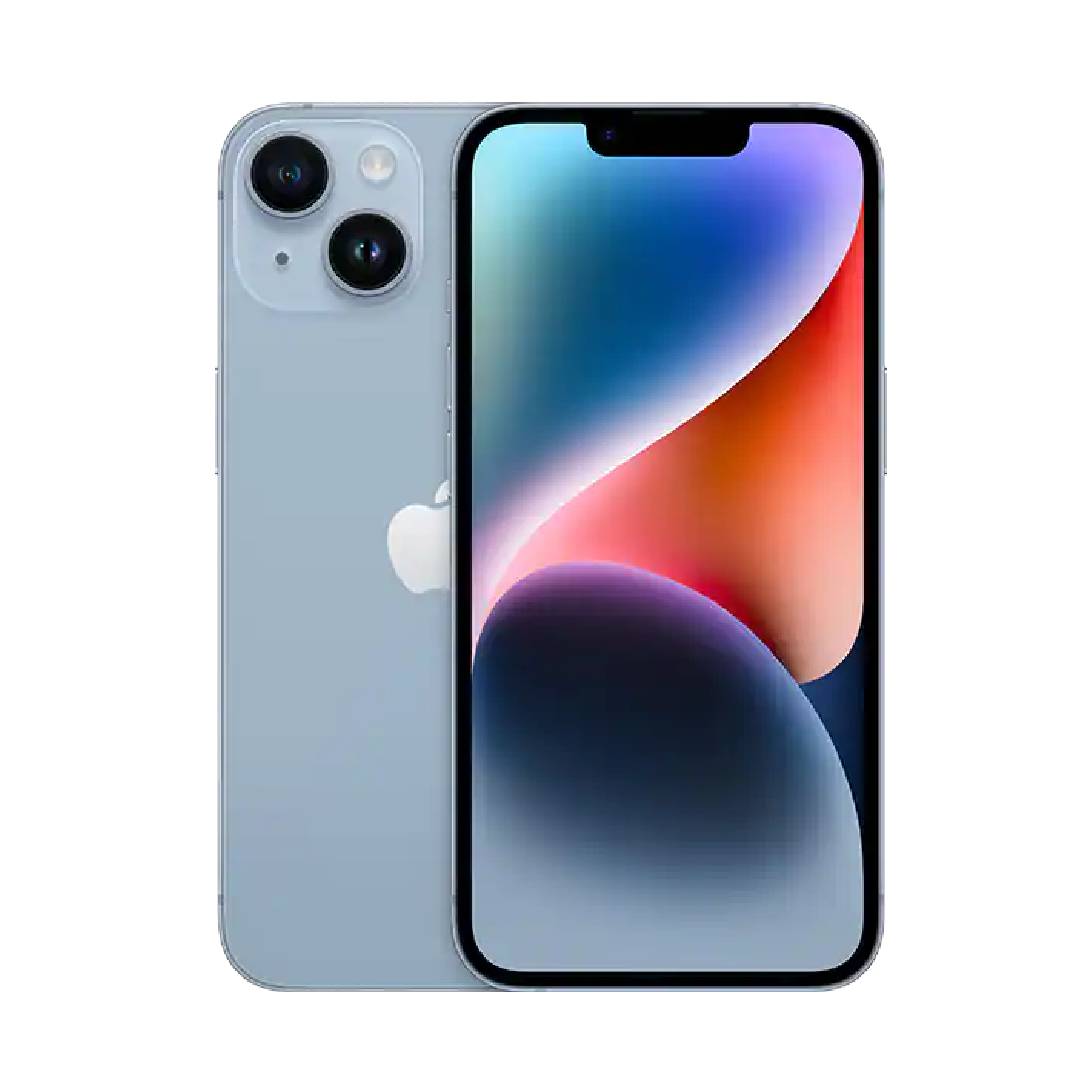
The iPhone 14 Pro is $200 pricier, starting at $999. The cheapest iPhone 14 Pro also comes with 128GB of storage, but unlike the iPhone 14, it sports 6GB of RAM and the new A16 Bionic SoC. You’ll find the same 6GB memory capacity across the $1,099 256GB model, the $1,299 512GB variant and the $1,499 1TB configuration.
If those prices are killing your vibe, we get it. Fortunately, using Apple Trade In with a qualifying device, you can receive up to $720 in trade-in credit toward the iPhone 14 and iPhone 14 Pro. In other words, if you’re lucky enough to turn in a device that yields $720 in trade-in credit, you can snag the iPhone 14 for only $80. Carriers like Verizon, Sprint and T-Mobile are even more generous with theirs iPhone 14 trade-in dealsso be sure to check ’em out.
Winner: iPhone 14
iPhone 14 vs. iPhone 14 Pro: design
Upscale homes often have swanky kitchen islands with marble countertops, and in the same way, the most luxurious smartphone of the two, the Pro, sports the well-received Dynamic Island (DI) design that sets it apart from the lower-end iPhone 14 This is due to the new capsule-shaped cutout on the iPhone 14 Pro, which replaces the notch that Apple introduced on the 2017 iPhone X.
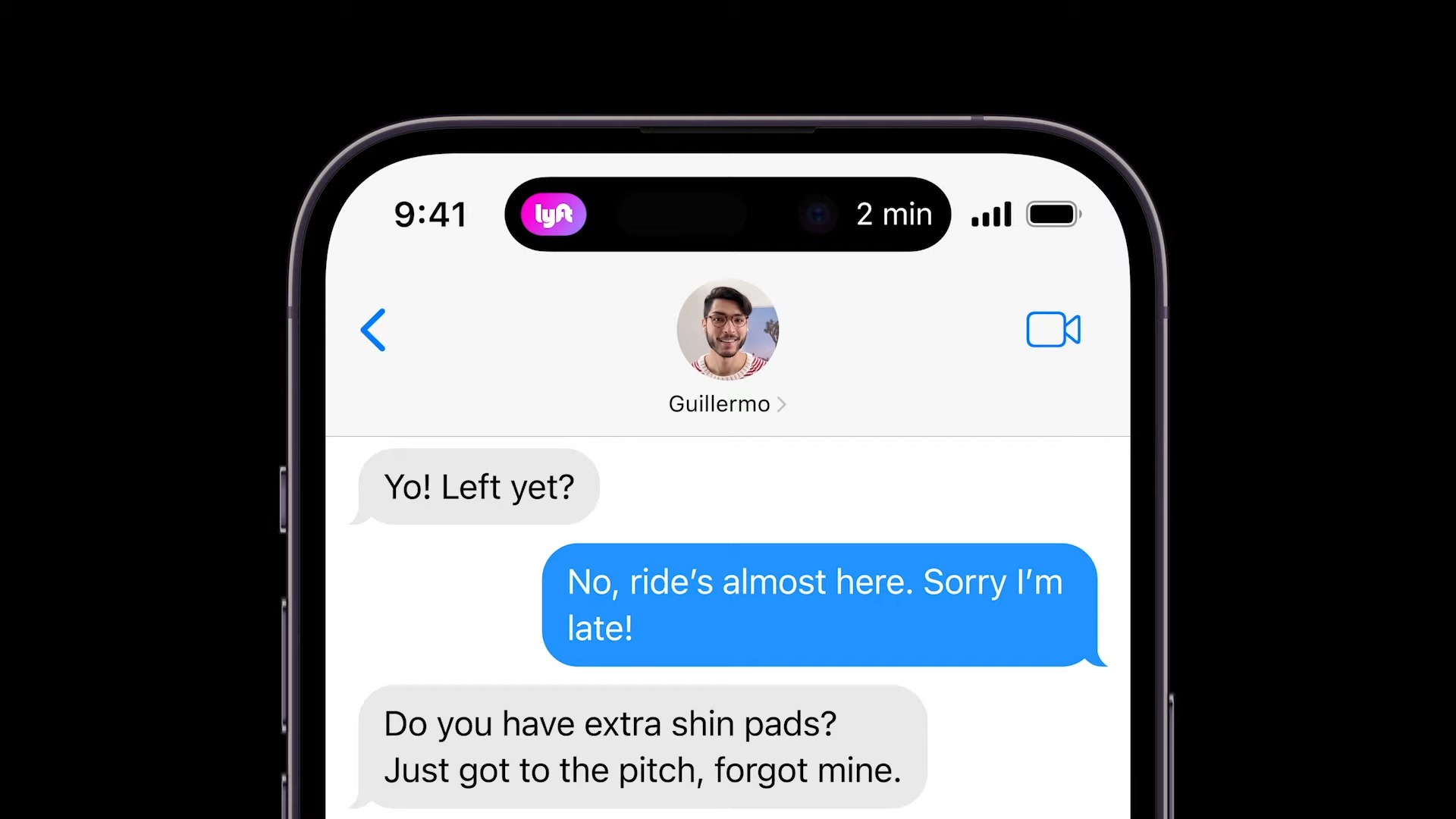
Dynamic Island is an interactive UI that brings a unique, sleek take to your notifications and status icons. Whether you’re charging your phone or connecting your Apple AirPods 2 to your device, DI generates uniquely crafted animations and transitions for each activity. DI can also expand, allowing you to get more detailed information. For example, if you’re tracking your Lyft driver, you can tap on the Dynamic Island; it will then expand to provide you with an up-to-date report on the whereabouts of your ride. The iPhone 14, sorry to say, gets none of that. The lower-tier phone still wears the now-obsolete notch, which houses the selfie camera and Face ID hardware.
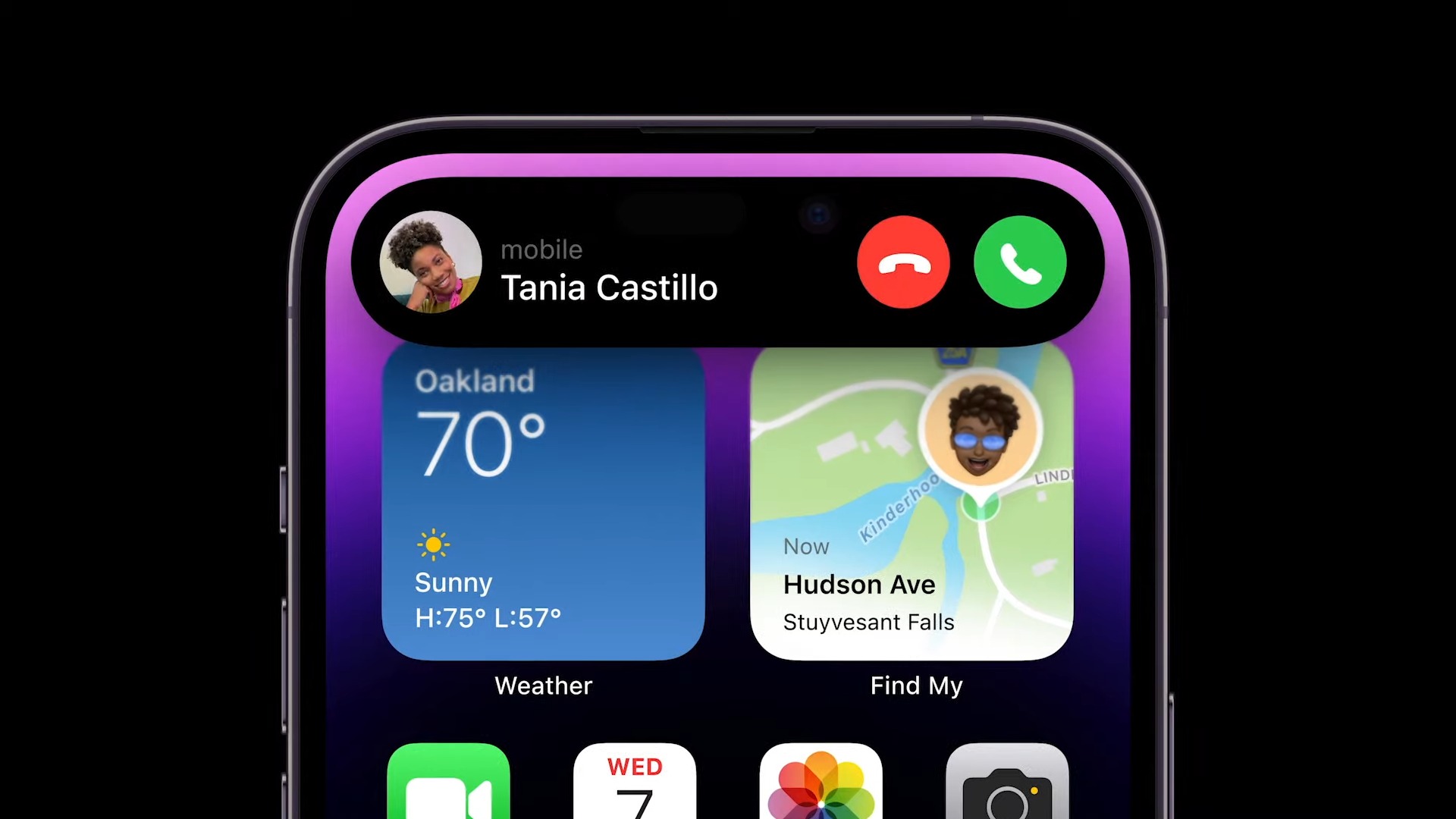
Now, let’s talk about the chassis. The iPhone 14 is wrapped in aerospace-grade aluminum while the iPhone 14 Pro has a surgical-grade stainless steel casing. The former has a glossy rear coating while the Pro has a matte finish. Both share the same iPhone 5-esque shape with flat edges that allow the phones to stand on their own two feet. The two also share the same display size: 6.1 inches. If you want a 6.7-inch phone, consider the iPhone 14 Pro Max or the iPhone 14 Plus.
Looking at the rear camera setup, the iPhone 14 is adorned with a dual-camera system while the iPhone 14 Pro stands out with its triple-camera array. Finally, the iPhone 14 Pro’s colors are more sophisticated, offering Deep Purple, Gold, Silver and Space Black. The iPhone 14, on the other hand, has Blue, Purple, Midnight, Starlight and Product(red) variants available. The iPhone 14’s colors appear to be more pastel in tone while the Pro offers richer hues.
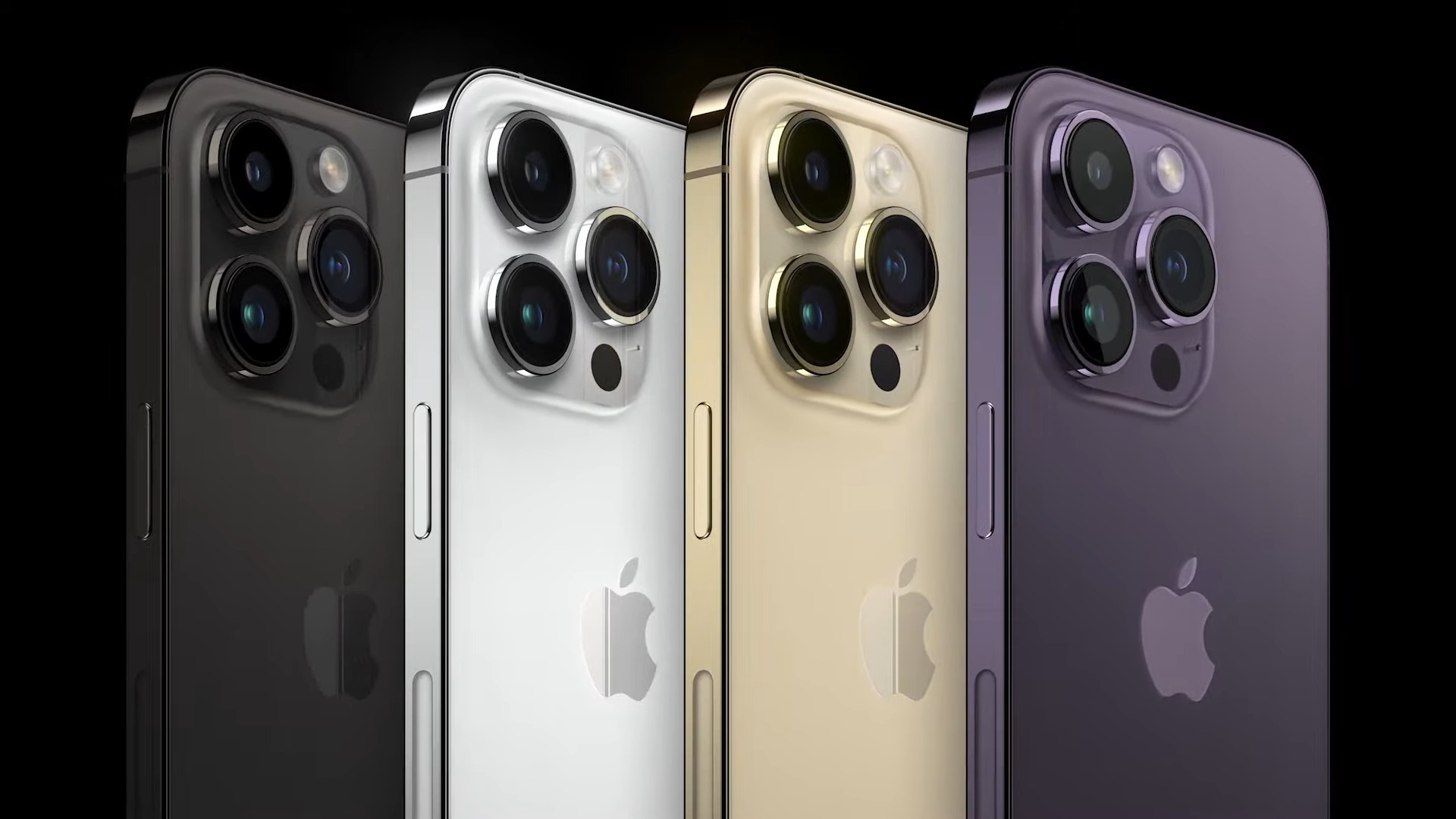
The iPhone 14 and iPhone 14 Pro share the same dimensions: 5.8 x 2.8 x 0.3 inches. However, the former is lighter at 6.07 ounces. The iPhone 14 Pro is 7.27 ounces.
Winner: iPhone 14 Pro
iPhone 14 vs. iPhone 14 Pro: display
The iPhone 14 siblings both feature a 6.1-inch, OLED, Super Retina XDR display. However, the iPhone 14 Pro comes with a host of cool screen features the iPhone 14 lacks, including ProMotion (up to 120Hz refresh rate), slimmer bezels, and an always-on display.
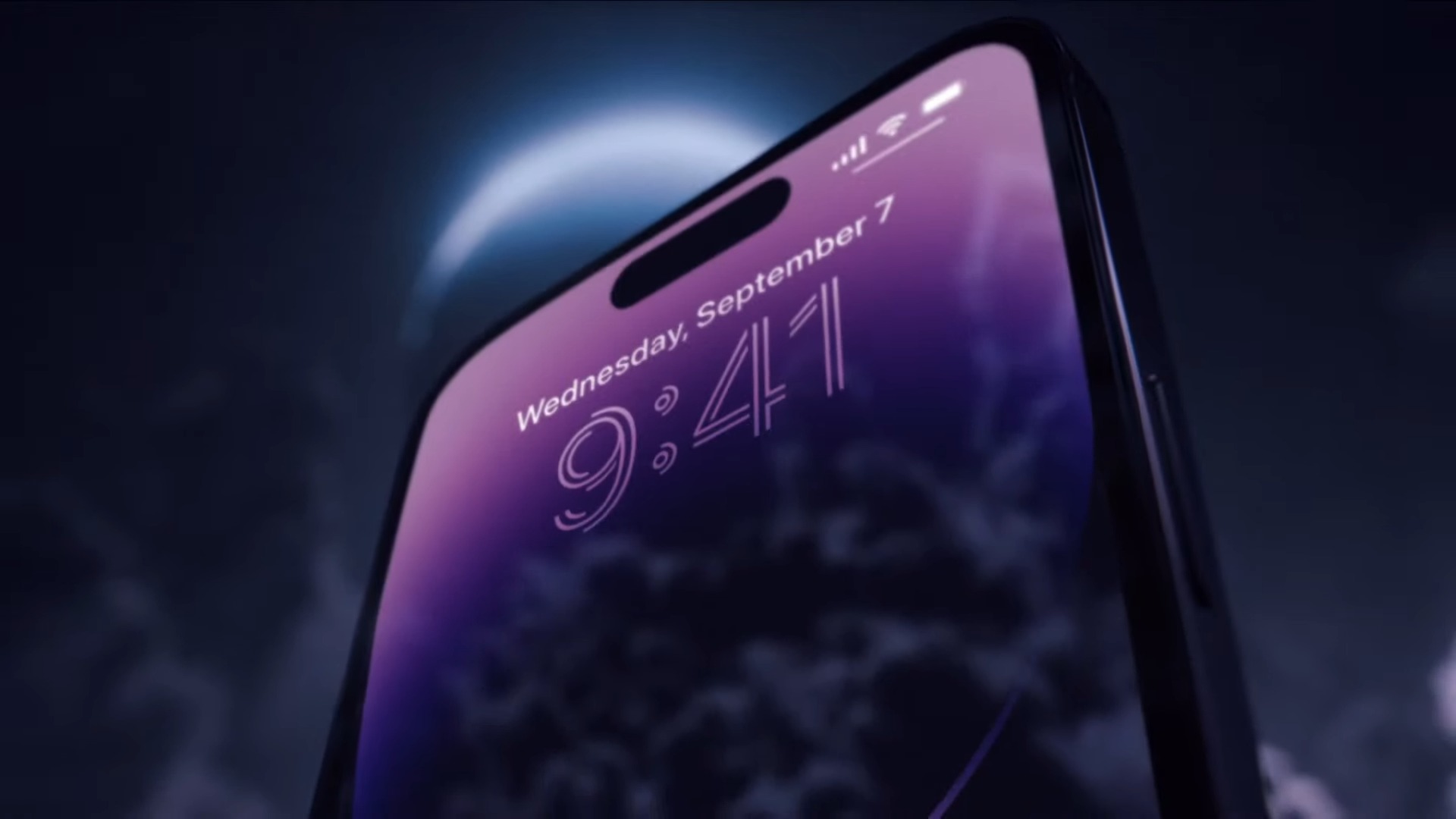
“What’s an always-on display?” you ask Well, it lets you take a peek at the time and other on-screen details without needing to “tap the phone awake.” The iPhone 14 Pro can intelligently dim the entire lock screen and drop the refresh rate down to 1Hz (this helps preserve battery life), but at the same time, your display is always somewhat ready for your quick glances.
On top of that, the iPhone 14 Pro is brighter. While the iPhone 14 can reach 1,200 nits, the iPhone 14 Pro can climb up to 2,000 nits! That is the highest peak brightness of any smartphone. We’ll of course be testing these claims ourselves, but we’re willing to take Apple’s word that the iPhone 14 Pro is brighter.
Winner: iPhone 14 Pro
iPhone 14 vs. iPhone 14 Pro: performance
The iPhone 14 Pro, with its next-gen A16 Bionic chip, will blow the iPhone 14’s A15 Bionic chip out of the water. The new A16 Bionic chip was built to focus on three important areas: power efficiency, display and camera performance. It’s packed with 16 billion transistors, the most ever in an iPhone. Apple also boasted that it’s the company’s first chip built on a “state of the art” four-nanometer process.
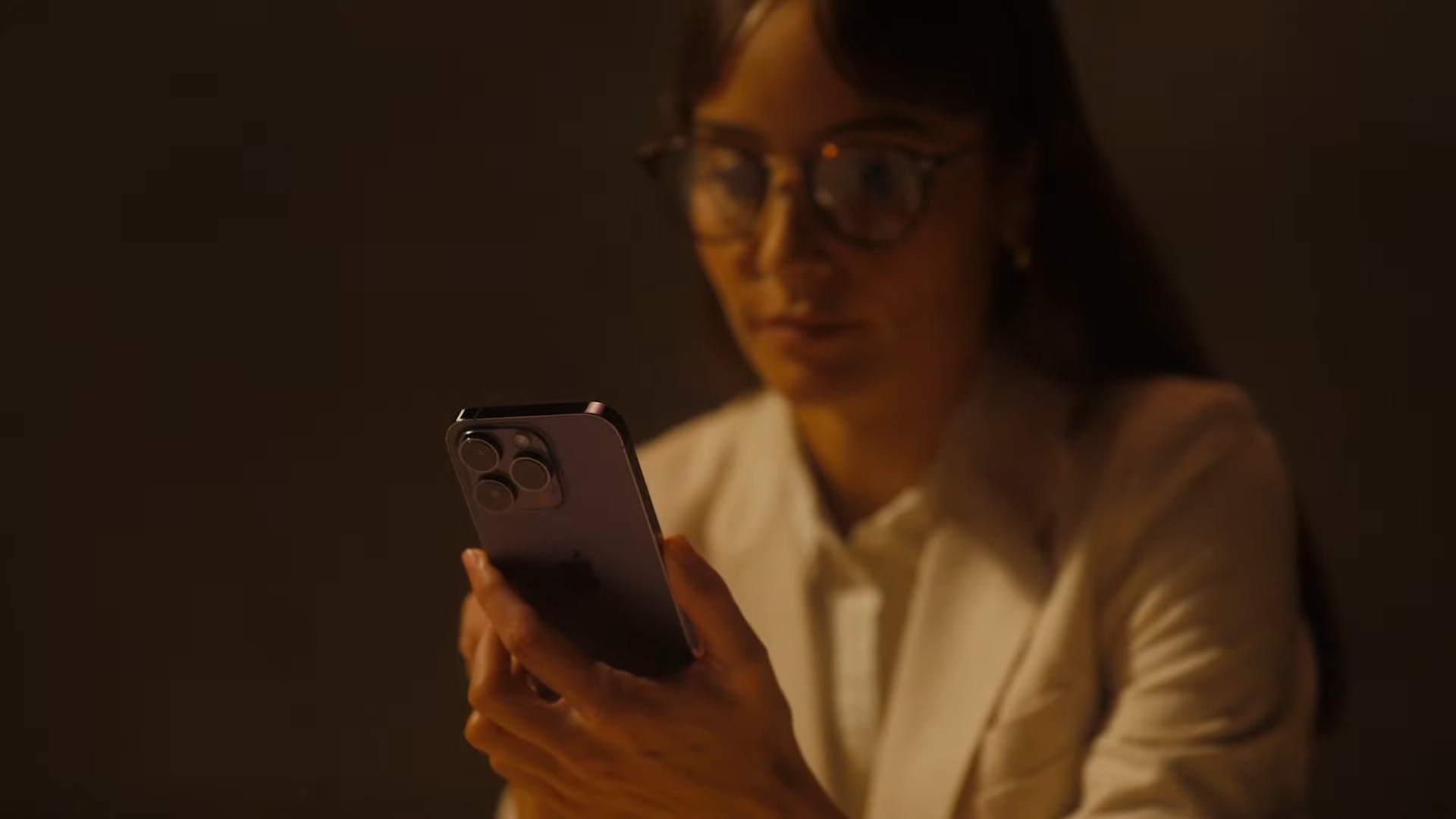
Apple’s A-series Bionic chipsets have outperformed all other mobile SoCs in recent years, and the A16 Bionic chip is no different. The six-core CPU and GPU inside the chip is lightyears ahead of the competition. The Neural Engine inside the A16 Bionic, responsible for machine-learning algorithms, delivers a whopping 17 trillion operations per second. It helps the iPhone 14 Pro handle advanced computational processes, including the envelope-pushing new features implemented with the Pro’s updated cameras.
The entry-level iPhone 14 has an updated A15 Bionic chip with a faster 5-core CPU. Compared to the iPhone 13, graphics and mobile gaming should be smoother on the iPhone 14. Don’t be disappointed that the iPhone 14 doesn’t feature the new A16 Bionic chip. As mentioned, Apple has had its foot on its competitors’ necks when it comes to the iPhone’s chipsets for years, and the A15 chip is already pretty damn good — it’s almost too good
We don’t have benchmarks on the iPhone 14 nor the iPhone 14 Pro just yet, but there’s no doubt that they will blow its rivals away.
Winner: iPhone 14 Pro
iPhone 14 vs. iPhone 14 Pro: battery life
If you want the iPhone with the best battery life, according to Apple, you’re better off with the 6.7-inch iPhone 14 Plus.
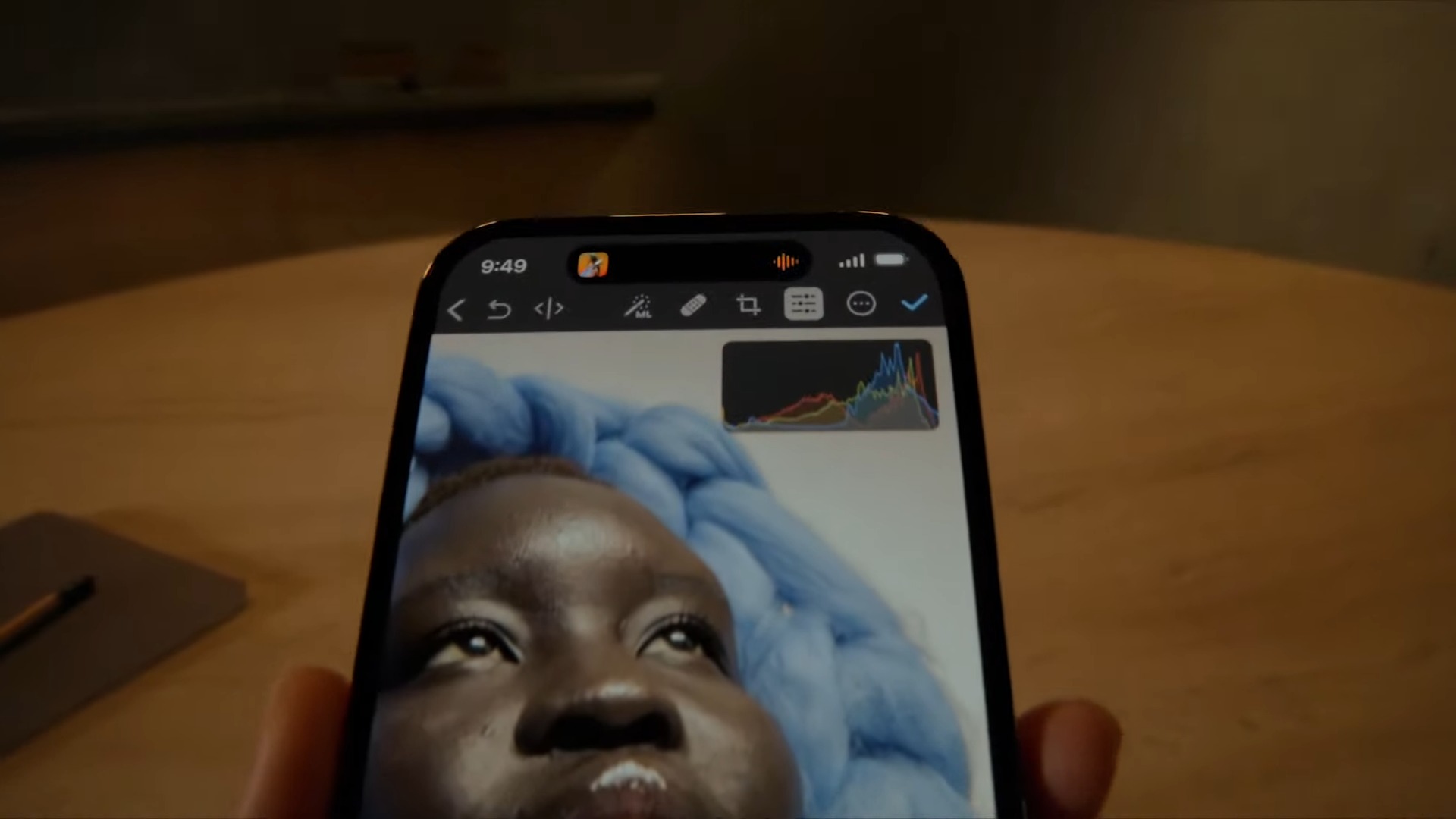
As of this writing, we don’t have battery life results for the iPhone 14, but Apple claims the entry-level model offers up to 26 hours of video playback. The Pro model, on the other hand, delivers 29 hours of video playback. We also have no idea about the battery sizes placed inside the iPhone 14 and iPhone 14 Pro, but once the right hardware folks break down the devices to explore their internals, we’ll know for sure.
Thanks to the A16 Bionic, the iPhone 14 Pro consumes 20% less power than the A15 Bionic, so there’s a good chance that the Pro model’s battery life outlasts its entry-level sibling.
Winner: iPhone 14 Pro
iPhone 14 vs. iPhone 14 Pro: cameras
Stellar smartphone cameras are one of the most compelling selling points, and from my experience with the iPhone 13, the iPhone 14 and iPhone 14 Pro’s shooters should continue to satisfy consumers, especially with the new upgrades.
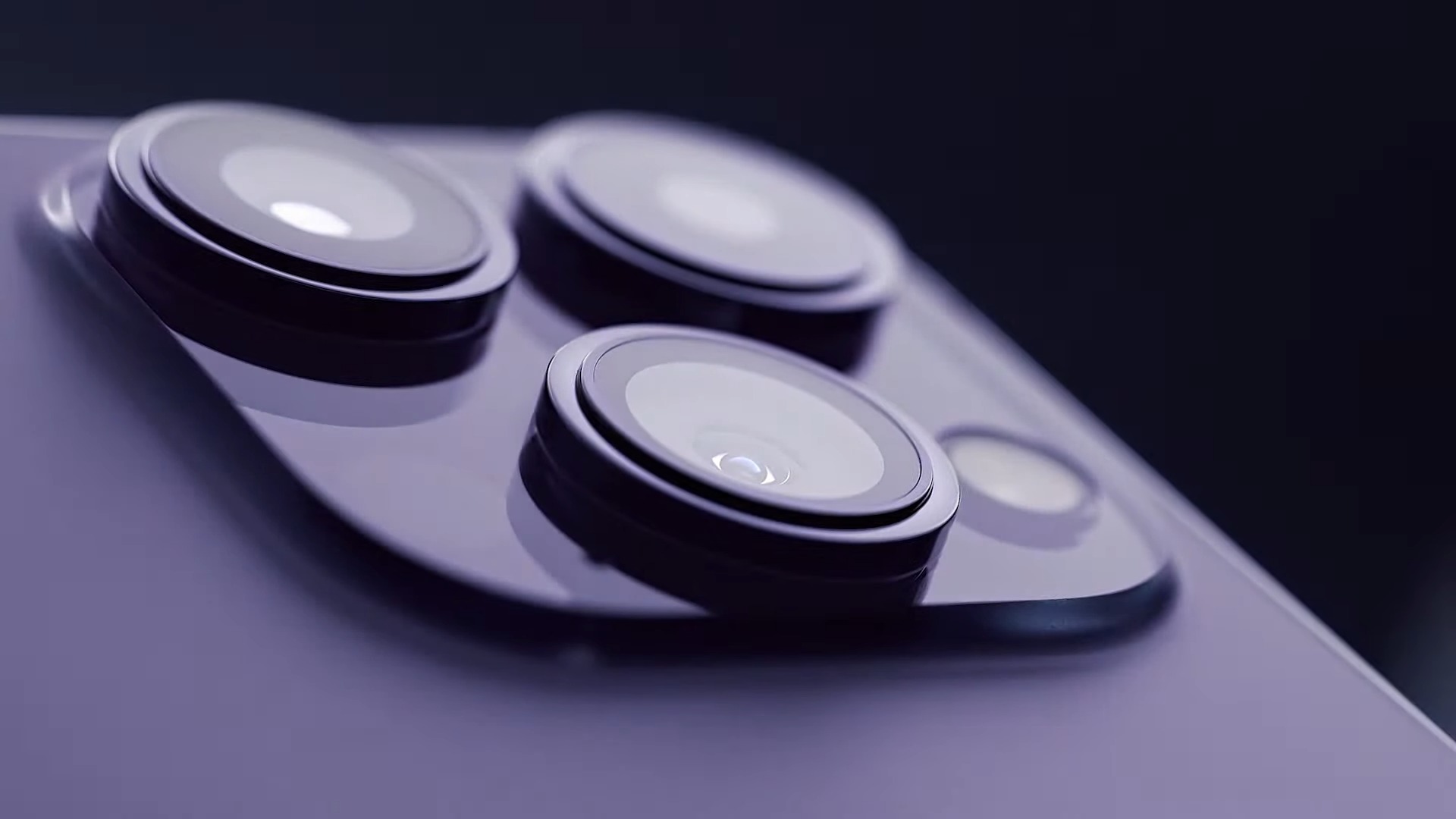
The iPhone 14 Pro has a more sophisticated camera system with a triple-camera array that includes wide and ultra-wide cameras as well as a telephoto lens. The iPhone 14 Pro has a 48 megapixel wide-angle camera with an f/1.8 aperture, which reportedly increases its low-light performance two-fold compared to the iPhone 13 Pro.
The wide camera’s sensor is 65% larger compared to its predecessor. Professional on-the-go photographers may also appreciate the ability to now shoot ProRaw at 48MP. Other specs include a 2.44 µm quad-pixel size and a 24 mm focal length
The iPhone 14 Pro’s ultra-wide camera delivers a 3x improvement in low-light conditions compared to its predecessor. It, too, has a larger sensor. It features a 1.4 µm pixel size, an f/ 2.2 aperture and 13mm focal length. There’s also an improved macro mode.
Apple claims that the iPhone 14 Pro sports its best telephoto lens ever. Its specs include a 1.22 µm pixel size, an f/2.8 aperture, and a 48mm focal length. If you have no idea what telephoto is used for, it’s ideal for portrait photography, allowing you to focus on a particular subject of your photo. According to Apple, low-light performance using telephoto has increased two-fold.
Thanks to the upgraded LED flash, photos should be twice as bright across all three lenses.
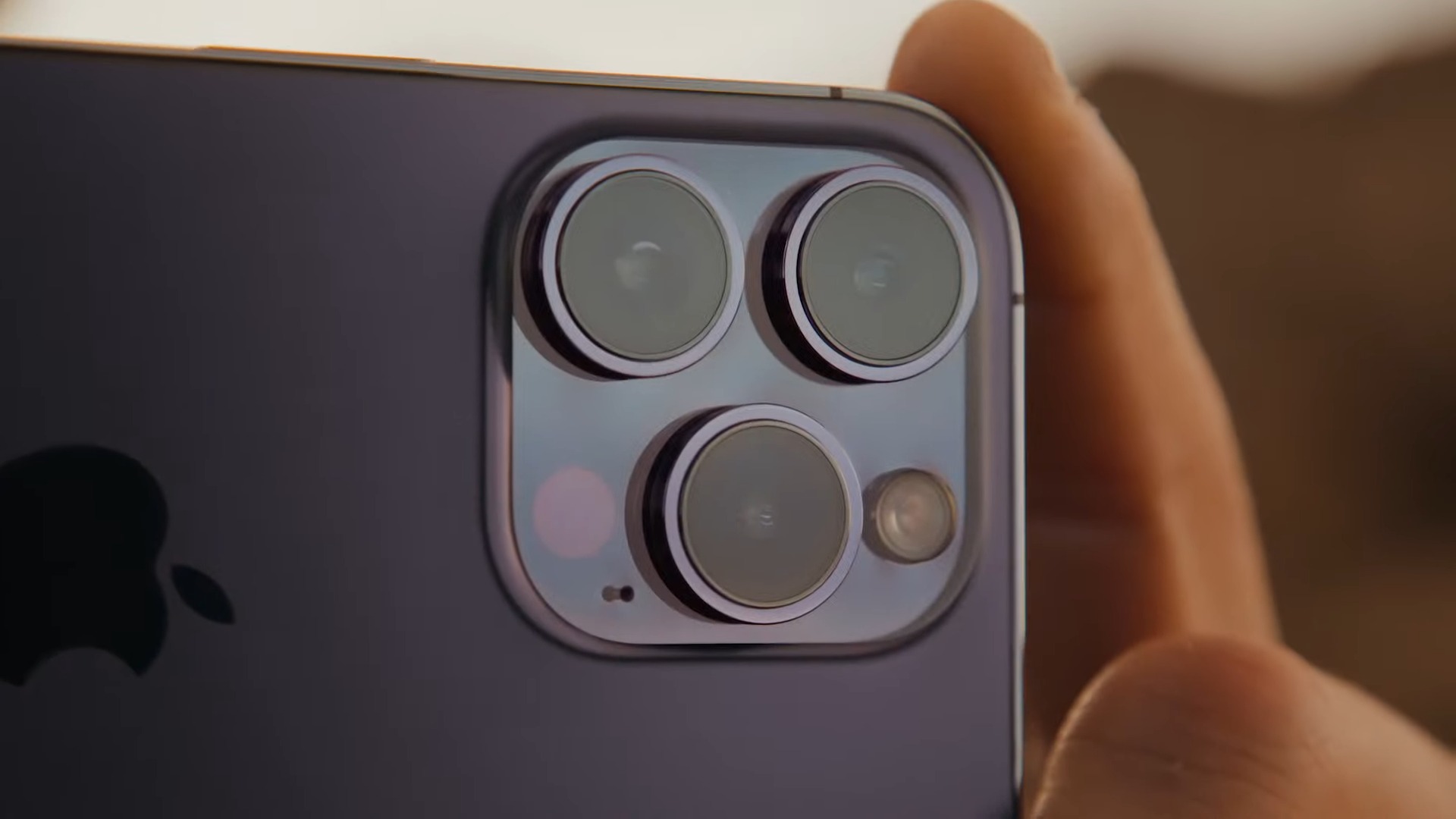
The iPhone 14, on the other hand, only has two rear cameras: a wide and ultra-wide camera. The former has a larger sensor and features a 1.9 pixel count as well as an f/1.5 aperture. Apple claims that the iPhone 14 delivers a whopping 49% improvement in its low-light photos compared to the iPhone 13, but we’ll be the judge of that. There aren’t any noteworthy changes to the 12MP ultra-wide camera hardware.
Now, let’s talk about the selfie cameras on both the iPhone 14 and iPhone 14 Pro. Both feature a TrueDepth camera with a faster f/1.9 aperture, which means your selfies in dimmer environments should be much better (38% improvement). The front-facing camera also sports auto focus for the first time, allowing the camera to focus clearly on the subjects in the photo.
Overall winner: iPhone 14 Pro
If you’re determined to buy one of the iPhone 14 tiers, I’d suggest snagging one of the Pro models. The entry-level iPhone 14 isn’t a significant departure from the iPhone 13, especially design wise. If you’re going to spend hundreds of dollars on a smartphone, you’d want it to at least look new The iPhone 14 Pro, with its new capsule-shaped cutout and Dynamic Island UI, certainly screams, “I have the latest and greatest iPhone 14!”
Would I shell out the extra $200 for the iPhone 14 Pro? Yes. If you’re not convinced and you’re still eye-ing the entry-level iPhone 14, you might as well get the iPhone 13. It starts at $599 now (opens in new tab) and isn’t significantly different from its successor – unless having satellite connectivity and crash detection is an absolute must for you